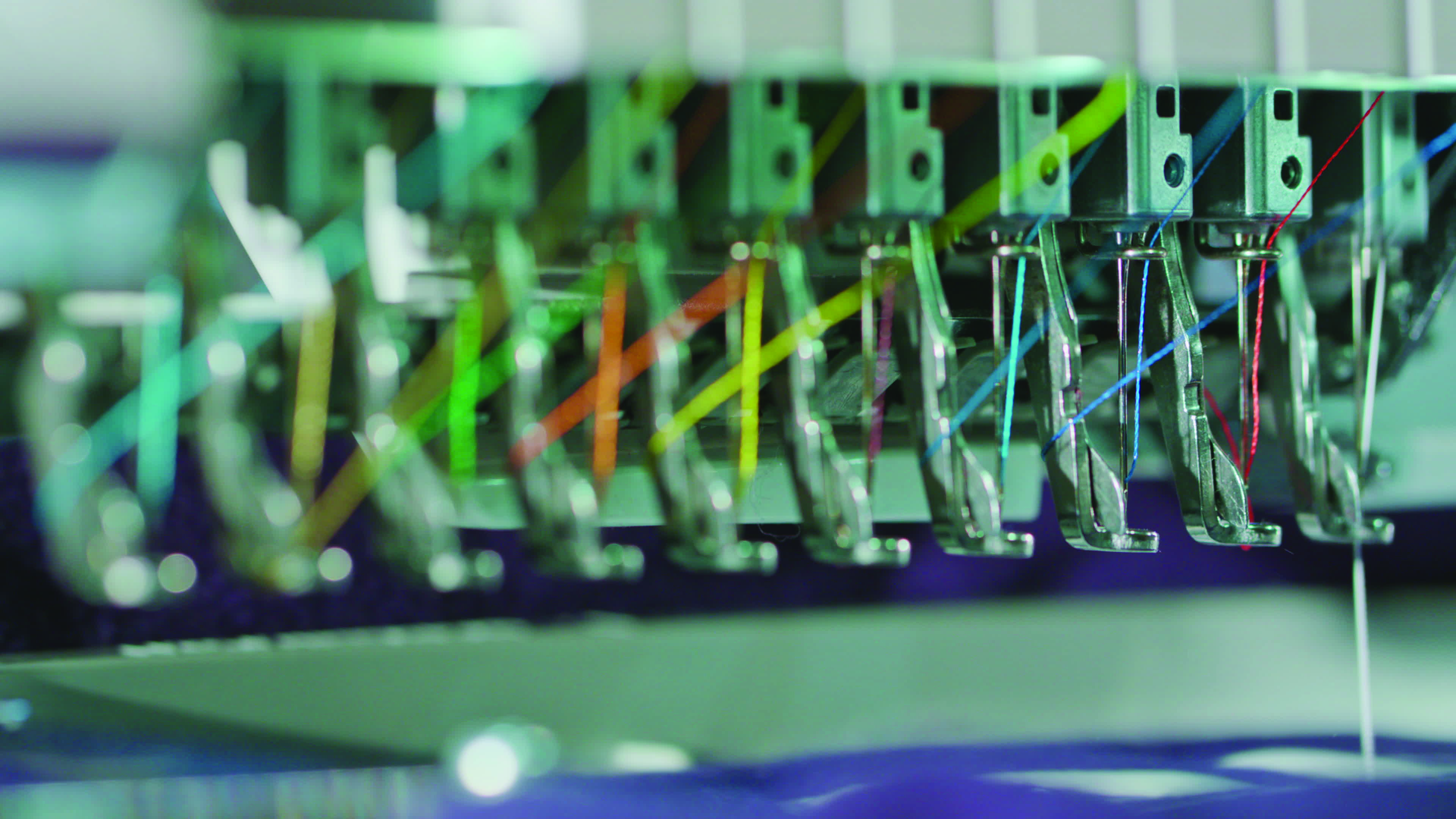This is the first installment of Meet the Expert, a four-part blog series in which we discuss embroidery, screen printing, DTG, and sublimation with the pros who do it every day at Scalable Press.
Some call embroidery a handicraft. Others call it an art form. However you refer to it, ensuring custom embroidery looks good takes precision and know-how. Cue Jorge Gonzalez, the man behind the stitching at Scalable Press. We recently sat down with him to discuss embroidery best practices, what makes a good embroidery file, and where he thinks the industry is heading.

1. How long have you been working with embroidery? It’s been almost 10 years. I started in 2010 with a national retailer that specializes in sports apparel, then came to Scalable Press a couple of years ago.
2. Favorite part of the job? Seeing the different types of art being embroidered, and the techniques our digitizers use to convert a customer’s art into something that can be embroidered.
3. Name something you didn’t know about embroidery before you joined Scalable Press. Before I came here, I’d only worked on sports apparel for the e-commerce side of the business. We’re much more diverse here, not only in the types of apparel we embroider, but the customers we serve.
4. What are the elements you need to have to ensure a high-quality finished product? There are several. I’d say the most important are:
-
- A good digitized file
- The correct backing
- Proper hooping
- Good machine maintenance
- A well-trained crew
5. What are the most challenging fabrics to embroider? Every fabric has it’s challenges because the process for that fabric can change depending on the art we’re embroidering on it. For instance, knit caps tend to give us difficulty if the art is complex. Dri-fit garments are sometimes a pain due to the thin material.
6. What’s the most complex design you’ve seen embroidered, and what are you most proud of? The most challenging was the Aztec calendar. It looked amazing when it was done, but it took over 8 hours of machine time. And I think we went through about 10 bobbins before it was finished. The work I’m most proud of was a retirement jersey for former Jets linebacker, Curtis Martin!
7. What are some of the common issues you see with embroidery orders, and how can they be avoided? We see a lot of design files that aren’t set up correctly for the type of garments the customer wants to have embroidered. For example, if you want a logo embroidered on a hat and a polo, the same design file you use for the hat won’t always work for the polo due to the proportions. The best way to avoid this issue is to request a file for a hat and another for a polo.
8. Any plans to expand the types of embroidery we offer? We’re always looking to expand our offerings. In the near future we might consider doing 3-D embroidery and applique.
9. What do you think is next for the future of the industry? Last month, I saw a machine at the Print United Show that sublimates on thread as it goes. I thought the technology was cool, but it’s not for mass customization. It would be amazing to see this get more industrial so that we don’t change thread any more. I think the industry will continue to get more automated inside the print shops. And I think we’ll start seeing bigger shops and less mom and pop shops.
10. How many embroidered items do you own? In the beginning I had a lot, especially hats. It got to the point that my closet was so full, I had to start giving things away. In fact, I just got rid of two big boxes of embroidered hats, polos, and jackets during a recent move. I’d say that puts it down to around 40.
For more on embroidery, check out:
- Our embroidery reference guide
- How to submit a digitization request
- Embroidery Best Practices
Next in series: Meet the Expert: DTG with Kevin Gonda.




